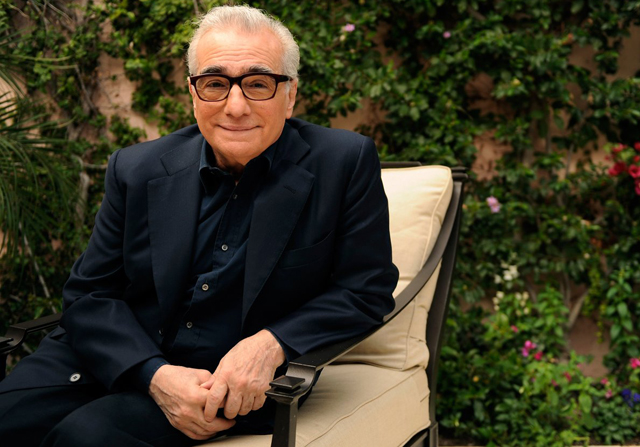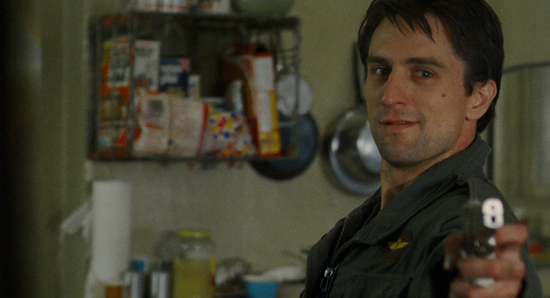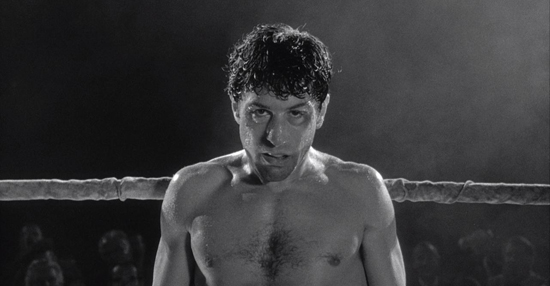
When we think of the quintessential film director persona, a few faces certainly come to mind. Usually it’s a larger than life individual who wields a strong commanding presence, with a touch of god-like will that strives to make everything on camera perfect. While there are some directors that shy away from the spotlight, a few do step forward and not only give a face to the directing profession as a whole, but also become celebrities in their own right. Cecil B. DeMille and Alfred Hitchcock were certainly the first of many film directors to become familiar faces to the average audience members, but their ability to put themselves forward also accomplished something even more than just extra publicity. It made the director more accessible, and showed that this was a profession that was more than just work, but also a way of cementing authorship for the films they make. The idea of the auteur filmmaker rose out of this time, and audiences began to take note that there was value in the collective works of each selective director and that it sparked interest in many wannabe filmmakers to follow in their footsteps. But, even more important than the celebrity status that a film director achieves is what they choose to do with it. Certainly most successful filmmakers today want to tell stories that have meaning and can inspire something in the viewer, but there are also a few that like to step back and view the medium of film-making as a whole and show the worth that it has in itself, and how it’s a gift that needs to be cultivated and preserved. And certainly no filmmaker today has championed film history and preservation as passionately as Martin Scorsese.
Scorsese came out of an era of film-making that was decidedly separated from the Hollywood glitz and glamour of the past. This was an era of rebel film-making, putting emphasis on darker story-lines and far less polished and grittier imagery. Scorsese, who grew up in a impoverished immigrant community in Queens, New York, certainly brought the roughness of life on the streets with him as he began his film-making career, but he also brought with him a sense of the magical escapism that Hollywood also instilled into him, as he has been a lover of all cinema from childhood. He was of a class of filmmakers during this time who had been reared up with cinema and were keenly aware of concept of auteurship in film-making. That’s why today when you watch a Scorsese picture, even in some of the earlier ones, you see an assuredness of style that is un-mistakenly tied to the person that he is. And it helps that he has a distinctive personality too. The fast talking, hyperactive director is such a great ambassador of the film director profession, because he so perfectly articulates his process of film-making and convinces us the absolute power that cinema can have. What I love best about Martin Scorsese is how he’s not just a great filmmaker, but also a champion of the art, casting the spotlight on cinema from all around the world that normally might fall through the cracks, and also advocating strongly for the preservation of cinematic treasures. With his latest and very ambitious new film, Silence, about to be released nationwide, I thought it would be fitting to examine his body of work as a whole, and spotlight the things that define what makes up a Martin Scorsese picture.
1.

THE CRIMINAL UNDERWORLD
Scorsese has worked within a number of genres, but if there was ever one that made up the vast majority of his body of work, it would be the crime genre. In many ways, the first thing you think about when you think of a Scorsese movie is that it has gangsters and mafioso in it. Scorsese may not have set out to become the go to guy for crime thrillers, but it’s something that he has certainly embraced over the years. And it’s easy to see why; he’s just so good at it. Certainly being raised in Queens may have given him some insight into this world. Though his family largely spared him from gang violence, it’s probably very likely that he had run across a few members of the mafia in his youth. And this insight helps to give him a different perspective on the genre. Instead of just portraying violence for it’s own sake in his gangster pictures, Scorsese looks deeper into the culture of organized crime, and shows it as this fascinating world of different personalities, some more extreme than others, who approach the American dream in their own way. Indeed, it’s the characters that really define a Scorsese gangster picture. Just look at all the character dynamics at play in Goodfellas (1990); with Ray Liotta’a even tempered Henry Hill clashing so vividly with Joe Pesci’s Tommy DeVito in the famous “do I look funny to you” scene; a role that won Pesci an Oscar. Scorsese also looks at criminal behavior outside of the New York crime world of his youth and gave us an interesting history of the mafia in Vegas with Casino (1995), and also the sometimes too often blurred lines between the crime world and the law with his Oscar-winning The Departed (2006). He also used his unique style to spotlight the blue collar crime world with The Wolf of Wall Street (2013). But, the great thing about his mark on this genre is that he doesn’t resort to making them action movies. He instead attempts to tell the story of American crime in our modern age, and vividly portray all the different characters that inhabit it.
2.

PERFORMANCES OF CHARACTER
Like the worlds that he portrays on screen, the other thing that Martin Scorsese meticulously cultivates in his films are the characters. What particularly interests him however are characters that feel like they are fully part of the world he is creating; characters who live, breathe and completely exist in the story. For these characters to work as well as they do, it means that Scorsese needs to have actors that he can have complete confidence in. That’s why I think he’s a director that likes to work with the same set of actors over and over again. You certainly see this in his crime films, which usually has the same character actors like Pesci or Frank Vincent playing the same kinds of roles, usually because they are so good at fitting that type of character. But even outside of the crime genre, you see a love of Scorsese’s for actors who disappear into their role. It’s something that I’m sure he valued in the two time he’s worked with the master of method acting, Daniel Day-Lewis, who starred in The Age of Innocence (1993) and Gangs of New York (2002) respectively. But there are two actors in particular that have especially defined his films over the years, and have been his two muses as it were. They of course are Robert DeNiro and Leonardo DiCaprio. DeNiro was the face of Martin Scorsese’s early career, which focused more on the gritty underworld, with incredible raw performances as Travis Bickle in Taxi Driver (1976) and as Jake LaMotta in Raging Bull (1980). Both films in particular show the commitment to the role that DeNiro labored for, even to the point of transforming his physical appearance. DiCaprio on the other hand is the perfect star for Scorsese’s newer era of more polished, matured era of film-making. And in their work together, we see performance ranging from the reserved (Billy Costigan in The Departed), to the unhinged (Howard Hughes in The Aviator) to the completely bonkers (Jordan Belfort in The Wolf of Wall Street) and all perfectly matched to Scorsese’s vision. Keeping familial company with the same actors could become problematic for some filmmakers, but for Scorsese, it’s better to work with who you trust.
3.

THELMA SCHOONMAKER
Often times when you look at the closest collaborator that a director has, who’s the indispensable part of their team that makes the director’s style come through, it often comes down to either the writer or the cinematographer, because they shape the language and the look of any movie. For Scorsese, his most essential collaborator has been his editor. Mrs. Thelma Schoonmaker has edited nearly every single film that Scorsese has made, with Taxi Driver being the most notable exception. Her influence can not be understated because her input into the movies is felt so strongly. In particular, she is a master at with montage editing. You see that in her work on Goodfellas and Casino, which have to convey time passage without losing the narrative flow. The death montage from Goodfellas, which is set to the melody of Eric Clapton’s “Layla,” is a particularly great example of her work. But her editing also provides some great insights into character, like the delirious moments of isolation seen in The Aviator (2004) or Shutter Island (2010), which perfectly underline the mental breakdowns of their protagonists. She’s also a master of making the violence in the movies carry greater impact. When a character dies in one of Scorsese’s movies, you feel the loss of life, because it often comes without warning. It takes a keen eye for pacing to know when to shock an audience and when to hold off. The shootings at the end of The Departed in particular are perfect illustrations of this, because Thelma does such a great job of making all the moments that come before the gunshots feel so relaxed. Her slow motion stretching out of the boxing match in Raging Bull also carries that same impact, but in the opposite way. That’s why every great Scorsese film is marked by the incredible work by Thelma Schoonmaker, who really stands as one of the greatest film editors of all time. They complement each other perfectly and have been essential to bringing out the best in each other, as all the best film collaborators have done.
4.

CINEMATIC LITERACY
While not the first nor last filmmaker to emphasize the influence of cinema as a whole in his work, Scorsese nevertheless has been one of the most vocal in the field. He has shown through both his movies and his advocacy that movies are his driving force. He references other movies in his films all the time, either overtly or suddenly, and many times he will try to emulate another filmmaker’s style as a gesture to their impact on his own style. I particularly noticed this after watching his new film Silence, which is thankfully playing early here where I live in Los Angeles. The Japan set feature has many moments that feel very much inspired by the work of Akira Kurosawa, and it wouldn’t surprise me if that was intentional on Scorsese’s part. He’s been a fan of Kurosawa’s work for many years and even got to act in one of the Japanese master’s last films (1990’s Dreams, where he played Vincent Van Gogh), so it’s not inconceivable that he looked to Kurosawa’s films for inspiration when making Silence. There are other clever ways that Scorsese has worked his knowledge of film history into some of his own movies. In The Aviator, there’s a subtle but noticeable trick he does with the cinematography that helps to convey the time period. For the first hour or so of the film, the color is graded in a way to make it look like the two strip color processing of the early 1930’s, which made everything look awash in sick greens and tan-ish reds. Only a student of film history, like myself, would notice the difference and I’m glad that he put in the effort to include it there. Scorsese also made a film that more acutely spotlighted his passion for film in 2011’s Hugo, a surprisingly family-friendly effort for the director. In Hugo, we see the growth of a young boy who discovers the magic of cinema and helps a long forgotten master of the art, Georges Melies, believe in himself again. I have no doubt that Hugo was a personal statement for the director and it’s really encouraging to see him share that with a movie that can speak to audiences of all ages.
5.

RELIGION
If there is also another common theme that runs throughout his movies alongside violence and cinematic influences, it would be religion. Scorsese himself has even stated, “My whole life has been movies and religion. That’s it. Nothing else.” Naturally coming from an Italian immigrant family, the Catholic Church was a strong influence in his upbringing. He even strongly considered joining the seminary to become a priest before a career in the cinematic arts came calling. Even still, his Catholic faith remains a strong point of inspiration in his movies, sometimes focused on in surprising ways. Though devout, Scorsese is not one to use his films to proselytize or preach. Instead, he looks at religion from a very introspective angle, looking at the many good and negative things that faith brings to the world. You see characters who deal with the conflicts of faith and real life in his crime movies like Mean Streets (1973) and The Departed (2006). There are also films that very directly address man’s relationship with God in this world. His first real statement on this was The Last Temptation of Christ (1988), which was widely panned by religious organizations because of it’s perceived flawed and too human portrayal of Jesus Christ, which is a misreading of the film’s intentions entirely. He also examined faith of a different kind with Kundun (1997), a movie about the early life of the Dalai Lama, the spiritual leader of Tibetan Buddhism. And his new film, Silence, also focuses on religion, this time telling the story of two Jesuit priests trying to spread the faith in a part of the world that might never be able to accept it. In all of these, you see Scorsese finding meaning in the complicated notions of religion and presenting an interesting voice that represents his own level of faith; one that is aware of it’s limits and interested in reaching for a deeper understanding. His religious themed movies have a better grasp on religion overall than most other faith based films, so that is something that alone makes him a god send in the film community.
Even in these latter years of his amazing career, Scorsese is still a filmmaker that takes chances, which is itself something remarkable. Just looking at something like The Wolf of Wall Street, you would think that it’s a movie made by some up and coming energetic hotshot and not from a seasoned veteran. But, at the age of 74 as of this writing, Scorsese is not only slowing down, he’s revving up. The Wolf of Wall Street is a manic, full of life cinematic wonder that perfectly resembles the energy of the man himself and the way he tells a story. And it’s this kind of personal drive that he’s brought into every film he makes. Scorsese is the kind of filmmaker that makes film-making look like the greatest job in the world. It’s his love for trying new things and for being unashamedly in love with the medium of film itself that opened the door for other voices like Quentin Tarantino and Edgar Wright, and a whole host of other self-reflexive filmmakers. His passion for keeping the history of film preserved is something that has also earned him due praise and you can’t help but wonder what treasures we may have lost over the years had people like Scorsese not worked hard to save them. In addition, his personality alone makes one want to keep up with his body of work and follow in his footsteps to making films themselves. It just shows that if you want to make films that have a great sense of character to them, it helps to be a character yourself, at least one that everybody can end up loving in the end. Whether he’s sharing his love for cinema, or showing the gritty reality of life in the criminal underworld, or giving a personal introspection into faith, Scorsese is without a doubt a master storyteller and one of the greatest filmmakers of our time or any time.